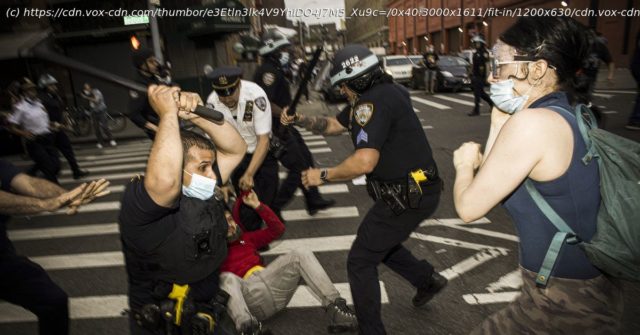Protesting during a pandemic is a risk. But so is the status quo of police violence.
Protesting during a pandemic is a risk. But so is the status quo of police violence.
America’s crises are boiling over, one into another. Amid the coronavirus pandemic, masses of people are taking the streets to protest police brutality after the death of George Floyd in Minnesota, and other victims of racial violence.
These two stories are linked. They are both public health stories. The link is systemic racism.
“The same broad-sweeping structural racism that enables police brutality against black Americans is also responsible for higher mortality among black Americans with Covid-19,” Maimuna Majumder, a Harvard epidemiologist working on the Covid-19 response, tells Vox.
“One in every 1,000 black men and boys can expect to be killed by police in this country,” she says. “To me, this clearly illustrates why police brutality is a public health problem; anything that causes mortality at such a scale is a public health problem.”
As the Covid-19 crisis continues, it’s also become clear that black communities, and other communities of color, have suffered a disproportionate burden. Law professors Ruqaiijah Yearby and Seema Mohapatra recently explained this in detail in the Journal of Law and Bioscience:
Many racial and ethnic minorities, Yearby and Mohapatra write, have been classified as “essential workers,” and are unable to work from home, leave their job, or access paid sick leave. They live in denser housing and more often polluted communities than whites — a result of years of racist housing policy that puts them at greater risk during a pandemic.






